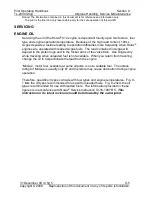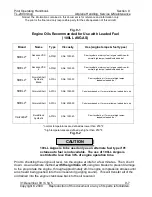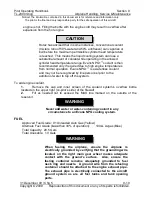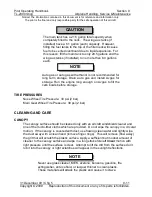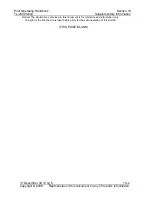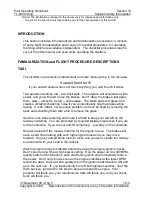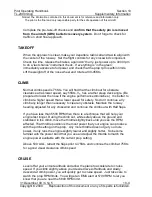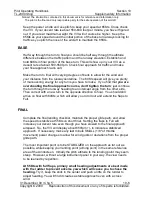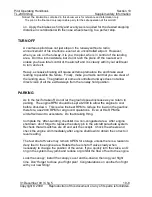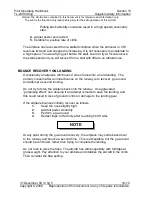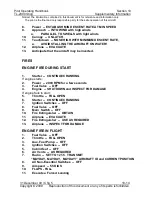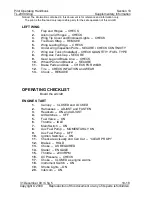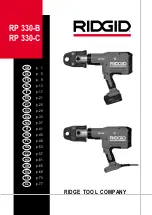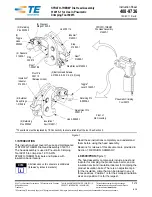
Pilot Operating Handbook
Section 10
TL-2000
Sting
Supplementary Information
Notice! The information contained in this document is for reference and information only.
The pilot is the final and only responsible party for the safe operation of this aircraft.
31 December 09 / Chg 5
10-7
Copyright © 2009 Reproduction of this document or any of its parts is forbidden.
Small throttle movements will generate large increases in speed and may cause
you to over-shoot the glide path or the 65Kt flap limit. (Remember exceeding
any aircraft limit cancels a check ride immediately and is not kind to your
aircraft.) Abrupt throttle control will also prevent a stabilized approach which is
the primary key to any good landing.
LANDING
While close into your aiming point and into the area of 'ground effect', simply
stop your decent just above the runway and start the landing flare. Attempt to
touch down at your intended landing point with little or no vertical descent rate.
The aiming point will pass underneath while you are working at holding the nose
wheel off the runway. This is normal and don’t worry about it. Spot landing will
come later and be much more accurate if you continue to train to use the
stabilized approach and a non-moving aim point.
You know from your stall practice that the Sting will continue to fly well below the
speed of the approach and flare. You will be using that difference in speed
(energy) to maneuver the plane during the last few inches above the runway.
The intent of any landing is to contact the surface of the earth at a tangent to the
runway surface so that (in theory) you touch down at minimum speed just as
you stop the descent rate. The most common problem is the pilot stops flying
the controls at touch down and lets the nose wheel flop on to the runway. Keep
flying the plane with full crosswind authority and use full aft controls if necessary
to protect the nose gear and tire.
ROLL OUT
But the landing is not over! Continue to fly the airplane, both with ailerons and
rudder, for crosswind control just as you did for takeoff. Use the elevator for
pitch control and keep the nose wheel from dropping to the runway as you
touchdown. Hold the nose wheel in the air and gently lower it to the surface at
about 35Kts. Make sure that you do not have any rudder input when the nose
wheel touches the ground. The rudder is directly connected to the nose wheel
steering and the aircraft will turn in the direction of rudder pedal deflection.
Continue to use the ailerons as required for cross wind control.
Now primary steering control will be with the rudder pedal interconnect to the
nose wheel. Apply the brakes gently at first to determine the braking
effectiveness for the surface conditions. Do not 'ride' the brakes or 'slam' them

